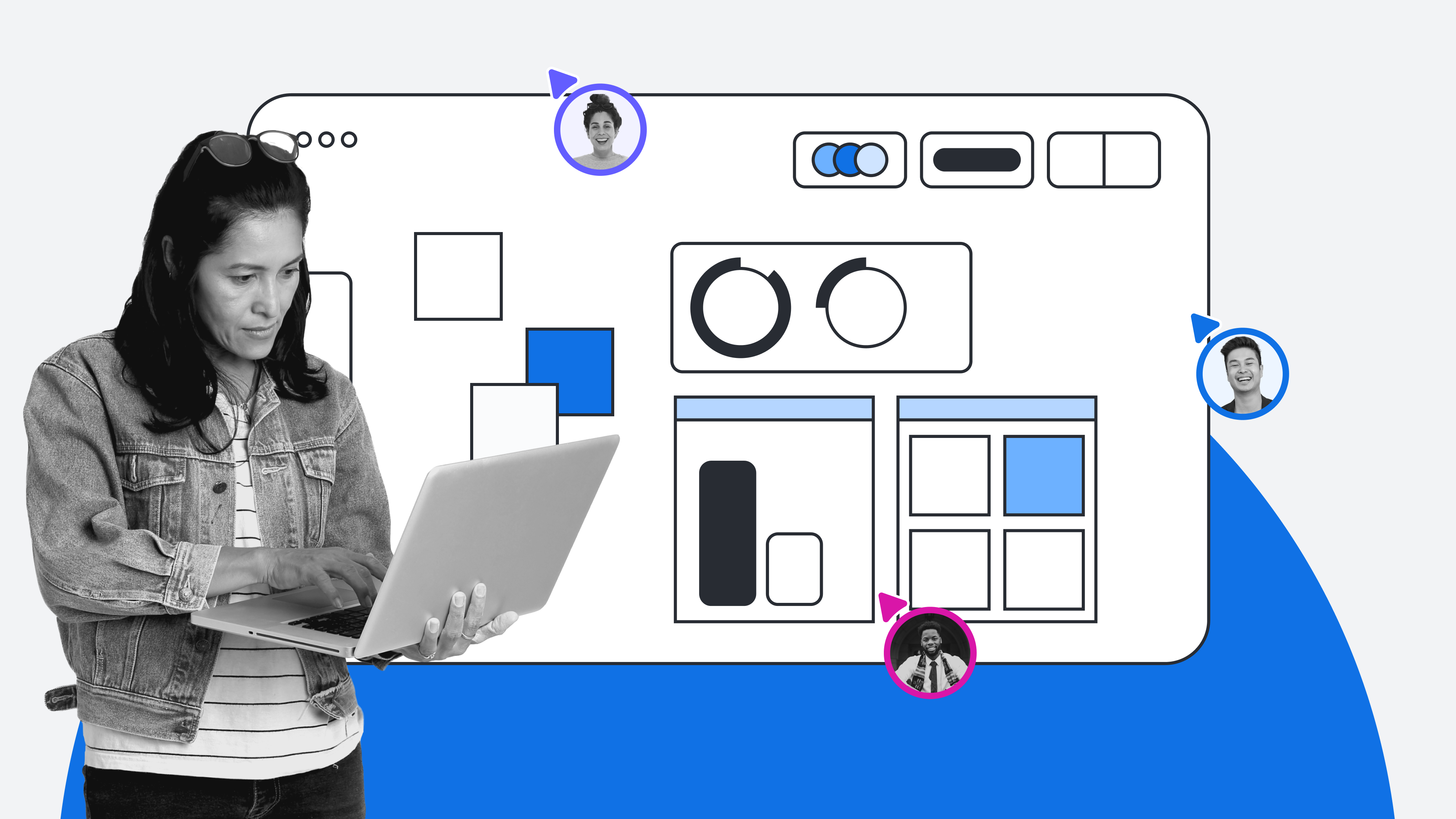Key takeaways
- The product life cycle (PLC) is a five-stage model. Stages include development, introduction, growth, maturity, and decline.
- The PLC is a vital framework used across different business functions. Understanding which stage a product is in helps companies make informed strategic decisions and stay competitive.
- The PLC is not a perfect predictor. It assumes a degree of predictability that may be nullified by market disruptions or global events, and the duration of each stage varies between different products and industries.
The product life cycle (PLC) describes a product's various stages and provides a framework for anticipating and responding to market shifts.
The PLC concept was introduced by Theodore Levitt in 1965. He outlined five stages of the product life cycle that are still relevant today: development, introduction, growth, maturity, and decline. Stages of the PLC are often depicted as a curve showing the gradual climb from development and introduction to a peak at maturity, followed by an eventual decline.
Every product has its own PLC, but the duration of each stage varies based on industry, product type, market conditions, and customer demand.
For example, basic denim jeans have been a popular article of clothing with a long PLC that has endured since the 18th century. But different styles and fits of denim jeans (such as acid wash, stone wash, ripped, boot cut, bell bottom, or skinny) typically have shorter PLCs because they’re tied to rapidly changing fashion trends.
Why is the product life cycle theory important?
Understanding a product’s PLC can help you make informed and strategic decisions about development, marketing, and resource allocation at every stage. It will help you identify the best time to develop and introduce new products to replace old ones, improve existing products to meet customer expectations, and adapt to market changes so you can stay competitive.
Who uses the product life cycle?
Several different roles and divisions within a business use the PLC concept to successfully release new products and maintain existing ones. This might include:
-
Product managers: Product managers use the PLC to determine when to introduce new products and update or release new versions.
-
Marketing: The product life cycle in marketing is important for developing ad campaigns at each stage, from building awareness to maintaining market share.
-
Sales: Sales teams use the PLC to understand the market, anticipate changes, and adapt their sales strategies.
- Manufacturing and operations: Understanding the PLC helps manufacturing and operations teams plan how many units to produce and manage inventory based on anticipated demand at every stage of the PLC.
The five stages of the product life cycle curve
Each stage below represents a different characteristic of a product’s performance in its market.
Development
This is the research stage where R&D teams determine whether the product is viable for launch. The company invests in talent to create prototypes and testing so they can pitch the product’s potential value to investors and other stakeholders. This stage can take a long time, depending on product complexity. It can also be expensive because development and prototyping don’t typically generate revenue.
Introduction
In the product life cycle introduction stage, the product has already been developed, tested, and built. Now, it’s time for launch. Driving sales will require an investment in marketing and promotions to build awareness and generate demand.
Growth
As awareness grows through effective marketing, good distribution strategies, and positive customer feedback, demand for the product increases. In the growth stage of the product life cycle, it’s important to focus on increasing production to meet growing demand. As sales increase, profits offset investments made during the development and introduction stages.
Maturity
In this stage, the product is well-known and accepted in the market. The product has sold well, but competition is intense and sales growth has hit a plateau. Maintaining or increasing market share will require strategies to differentiate the product from the competition, such as introducing improvements, changing the price, marketing more aggressively, or releasing a new version.
Decline
Sales are decreasing because of market saturation, a change in customer preferences, technological advancements in similar products, or the introduction of a new product that appeals to the same customers. You may decide to improve the product or phase it out if it can’t be revitalized.
What are the benefits of using the product life cycle theory?
Understanding and using the PLC can provide valuable insights to help guide your decisions throughout a product’s journey in the market. Benefits of using the PLC include:
-
Strategic planning: Make better decisions about product development, marketing, sales, manufacturing, inventory, and operations.
-
Resource allocation: Effectively allocate resources in each stage. For example, during the development and introduction stages, you might allocate more people, money, equipment, and materials to creating and marketing the product.
-
Risk management: Anticipate and mitigate potential risks associated with different stages of the PLC.
- Competitive advantage: Align effective strategies with each stage so you can adapt to changing market conditions and stay ahead of the competition.
Determining which stage of PLC your product is in
The time a product stays in each PLC stage differs for every product. For example, certain cola drinks have been in the maturity stage for decades, while the DVD hit its maturity and decline stages approximately 10 years after its peak with the emergence of new technologies like Blu-ray and streaming video.
Determining and understanding which stage your product is in can help you develop effective strategies to keep your product relevant and extend its life. Here are some factors you can evaluate to determine a product’s current stage.
-
Sales trends: How well is your product selling? If you just introduced it, sales might be slow. But you should see an upward sales trend. If sales are increasing rapidly, you’re probably in the growth stage of the product life cycle. When sales slow or decline, you’re in the maturity or decline stage.
-
Market share: How does your product compare to competitors? In the introduction and growth stages, you should see your product increasing its market share. In the maturity stage, you’ve captured a lot of market share. Maintaining and defending that share is crucial to keep the competition at bay. In the decline stage of the product life cycle, you’ll likely see your product lose market share to newer or more innovative products.
-
Customer feedback and satisfaction: What do customers say about your product? Positive feedback and increasing satisfaction can indicate that your product is in the growth or maturity stage. If feedback expresses dissatisfaction or indicates that customers are looking for an alternative, you might be in the decline stage.
- Competition: What does the competitive landscape look like? If there is a lot of competition with similar products, it could indicate that your product is in the maturity stage. If yours is the only product of its type in the market, there likely isn’t much competition. This could indicate that you’re in the growth stage.
What are the limitations of the product life cycle curve?
To be clear, the PLC is a valuable concept for planning and decision-making. But that doesn’t mean it has no limitations or drawbacks. Some of the limitations include:
-
Assuming the predictability of a product’s journey: The PLC assumes predictability, but predictions don’t always hold true because of factors such as market disruptions, economic changes, and environmental impacts. For example, who could have predicted the COVID pandemic or how it would disrupt various markets?
-
Varying durations of the stages of PLC: Because each stage of the PLC varies from product to product, it can be difficult to predict how long a stage will last.
-
Overlooking external factors: The PLC focuses on each stage of a product’s life. It might overlook external factors such as cultural shifts, global events, and regulatory changes. These external factors can influence a product’s success or failure.
- Bias toward new products: The PLC might overemphasize the development and introduction stages. Companies could get too excited about investing in new products at the expense of maintaining and updating existing products.
The PLC is important in helping companies successfully launch new products and stay competitive. But it’s important to understand that each product differs, and some won’t follow the same PLC pattern. The life of some products might be extended through product improvements, versioning, rebranding, or entering new markets.
A work acceleration platform that supports visual collaboration—like Lucid—can help your team plan, develop, and launch products and services into your market. The Lucid Suite has templates and tools that enable collaboration among hybrid and distributed teams. Use Lucidspark and Lucidchart to create customer journeys, workflows, flowcharts, Gantt charts, and other resources to help you stay ahead of the competition.
Use product management software like airfocus by Lucid to create clear product roadmaps that are focused on outcomes, and allow you to move strategically through the PLC.

Learn how to use Lucidspark to maximize product management with our free course.
Agile product management courseAbout Lucid
Lucid Software is the leader in visual collaboration and work acceleration, helping teams see and build the future by turning ideas into reality. Its products include the Lucid Visual Collaboration Suite (Lucidchart and Lucidspark) and airfocus. The Lucid Visual Collaboration Suite, combined with powerful accelerators for business agility, cloud, and process transformation, empowers organizations to streamline work, foster alignment, and drive business transformation at scale. airfocus, an AI-powered product management and roadmapping platform, extends these capabilities by helping teams prioritize work, define product strategy, and align execution with business goals. The most used work acceleration platform by the Fortune 500, Lucid's solutions are trusted by more than 100 million users across enterprises worldwide, including Google, GE, and NBC Universal. Lucid partners with leaders such as Google, Atlassian, and Microsoft, and has received numerous awards for its products, growth, and workplace culture.
Related articles
How to start a product development process
Learn about the different stages in the product development process and see how Lucidspark can help make your ideas a reality.
How to create the perfect product launch plan
Learn how to create the perfect product launch plan. Product managers or product marketing managers can use Lucidspark to help with planning.
How to write a great product specification sheet
In this post, we’ll discuss what a product specification is, why it’s important, and how to write a great one.

